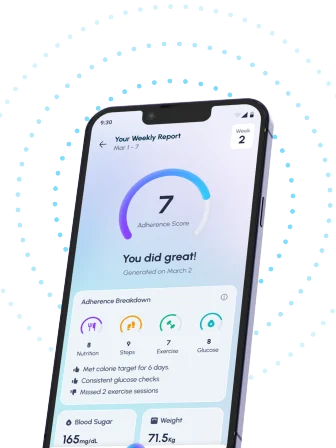Table of Contents
- Understanding Diabetic Ketoacidosis (DKA): A Comprehensive Guide
- Diabetic Ketoacidosis (DKA) Diagnosis: Symptoms and Tests
- Effective Treatment Strategies for Diabetic Ketoacidosis
- Managing Diabetic Ketoacidosis: Prevention and Long-Term Care
- Diabetic Ketoacidosis vs. Hyperosmolar Hyperglycemic State (HHS): Key Differences
- Frequently Asked Questions
- References
Living with diabetes requires careful monitoring and management, and understanding potential complications is crucial for maintaining good health. One serious complication you should be aware of is Diabetic Ketoacidosis: Diagnosis, Treatment, and Management Strategies. This potentially life-threatening condition arises when your body doesn’t have enough insulin to use sugar for energy, leading to a dangerous buildup of ketones. This blog post will delve into the key aspects of DKA, explaining how it’s diagnosed, treated, and how you can implement effective long-term management strategies to minimize your risk. Let’s explore how to stay safe and informed.
Understanding Diabetic Ketoacidosis (DKA): A Comprehensive Guide
Diabetic ketoacidosis (DKA) is a serious complication of diabetes, hitting type 1 diabetics hardest, but also affecting those with type 2. Think of it like this: your body, starved for fuel because it can’t use sugar properly, starts burning fat instead, producing ketones. Too many ketones make your blood dangerously acidic. This is especially risky in hot, humid climates like many parts of India and other tropical regions, where dehydration—a major DKA trigger—is common. Early detection is absolutely vital, as DKA can lead to severe complications, including kidney damage. In fact, diabetes significantly raises your risk of kidney disease; it’s estimated that nearly 30% of people with diabetes develop diabetic nephropathy.
Diagnosis of DKA
Diagnosing DKA usually involves blood tests showing high blood sugar, ketones in your urine or blood, and acidosis (high blood acidity). Symptoms often include:
- Excessive thirst
- Frequent urination
- Nausea
- Vomiting
- Fruity-smelling breath (from those ketones)
If you notice these, get to a doctor immediately. In tropical areas, heat-related dehydration can worsen things dramatically, emphasizing the need for swift action.
Treatment and Management
Treatment typically means a hospital stay for IV fluids to combat dehydration and electrolyte imbalances, plus insulin to lower blood sugar and ketone levels. Close monitoring of your blood glucose and electrolytes is essential. After discharge, the focus shifts to strict blood sugar control, adherence to medication, and lifestyle adjustments. Understanding electrolyte imbalances, such as why potassium levels can be high in DKA, is key to effective management.
Regional Considerations and Actionable Tips
Access to healthcare can be a challenge in some parts of India and other tropical countries, so being proactive is crucial. Regular blood sugar checks are paramount, especially when you’re sick or stressed. Staying hydrated—especially in the heat—is vital. If you suspect DKA, seek immediate medical help; early intervention dramatically improves outcomes. Regular checkups with your doctor and diabetes educator are invaluable preventative measures. Following a healthy diet, like the one suggested in this helpful diet chart, significantly reduces your risk.
Diabetic Ketoacidosis (DKA) Diagnosis: Symptoms and Tests
Recognizing the Warning Signs
Diabetic ketoacidosis (DKA) is a serious complication of diabetes, often triggered by poorly managed blood sugar. It’s a wake-up call, especially considering that a staggering 50% of diabetes cases globally remain undiagnosed. Imagine this: your body, starved for energy, starts burning fat for fuel, producing ketones as a byproduct. These ketones build up, making your blood dangerously acidic. This is DKA.
Common warning signs can hit you fast: intense thirst and frequent urination (you’ll be running to the bathroom!), bone-deep fatigue, nausea and vomiting that won’t quit, a fruity smell on your breath (from the ketones), and shortness of breath. If you experience these, seek immediate medical help. Understanding the early signs of diabetes is crucial, as early intervention can prevent DKA.
Essential Diagnostic Tests
Diagnosing DKA requires a few key tests. Your doctor will likely order blood tests to check your blood sugar (it’ll be sky-high), ketone levels (also elevated), and blood pH (showing the acidity). A urine test can also detect ketones. Electrolyte imbalances are common in DKA, and these will also be assessed via blood tests. The severity of your DKA will be determined by these results, dictating the treatment plan. Rapid diagnostic tests are vital in areas with limited resources, ensuring swift intervention. Remember, early and accurate diagnosis is life-saving. Delays can lead to serious complications.
It’s also worth noting that conditions like diabetes can sometimes affect test results; for instance, diabetes might surprisingly influence drug test results. Don’t hesitate; get checked!
Effective Treatment Strategies for Diabetic Ketoacidosis
Diabetic ketoacidosis (DKA) is a serious diabetes complication, especially concerning in hot climates like India and many tropical regions where consistent healthcare isn’t always readily available. Speedy, effective treatment is absolutely vital – it’s a life-or-death situation. Think of it like this: DKA is a wildfire; we need to put it out fast.
Fluid and Electrolyte Replacement
Intravenous fluids are the first line of defense. Imagine your body as a parched desert – we need to rehydrate it quickly. This involves carefully monitoring blood glucose and electrolytes. The rate of fluid administration is personalized; it’s not a one-size-fits-all approach. Dehydration can worsen existing issues like diabetic neuropathy (affecting 30-50% of patients!), causing pain and making treatment adherence a real struggle.
Insulin Therapy
Next, we tackle the insulin. Think of insulin as the firefighter controlling the flames. Regular insulin, given intravenously, helps regulate blood sugar and reduces ketone production. Dosage is adjusted based on your blood sugar, ketone levels, and overall response. We have to be extra careful to avoid hypoglycemia (low blood sugar), another potential danger. In areas with limited resources, safe insulin storage and administration become even more critical.
Additional Considerations
Potassium levels often dip during DKA, so replacement is frequently necessary. Underlying infections also need addressing. In India and tropical countries, access to prompt care needs serious improvement, so seeking immediate medical attention at the first sign of DKA symptoms can be the difference between a good outcome and a bad one. Early intervention is truly key! Remember, consistent diabetes management, including regular blood glucose monitoring and sticking to your treatment plan, is crucial in preventing DKA in the first place. For more tips, check out 10 Proven Tips for Effective Diabetes Management.
Seeking Help in India and Tropical Countries
Suspect DKA? Head to the nearest hospital or clinic immediately. Early action drastically increases your chances of a full recovery. Consistent diabetes management, including mindful eating, is essential. For information on safe supplement use, see Safe and Effective Dietary Supplements for Diabetes Care.
Managing Diabetic Ketoacidosis: Prevention and Long-Term Care
Diabetic ketoacidosis (DKA) is a serious diabetes complication, hitting hardest those aged 20-64 – a staggering 61% of cases, according to the International Diabetes Federation (diabetesatlas.org). In hot, humid climates like many parts of India and other tropical regions, dehydration significantly increases the risk, making prevention even more crucial. Successfully managing DKA needs a two-pronged strategy: prevention and ongoing care.
Preventing DKA
- Know your numbers: Regular blood glucose monitoring is key. Testing, especially during illness or stressful times, allows for early detection of dangerously high blood sugar – a major DKA warning sign. Think of it like checking your car’s oil – regular checks prevent bigger problems down the road.
- Stick to your plan: Strictly following your diabetes treatment plan, including medication and diet, is non-negotiable.
- Hydration is your friend: In areas with limited healthcare, staying well-hydrated and knowing the early warning signs (extreme thirst, frequent urination, fruity breath) are lifesavers.
- Older adults: extra care: For the 39% of diabetics over 65, extra vigilance is needed. Age-related cognitive or physical challenges can impact self-management. Resources like this one offer valuable support.
Long-Term Care Strategies
Long-term management boils down to keeping blood sugar levels stable. This means:
- Regular check-ups: Consistent appointments with your doctor, including eye and kidney exams, are vital to catch complications early.
- Family involvement: Educating family members about DKA recognition and emergency procedures is crucial, particularly if you live in a remote area.
- Smart monitoring: While continuous glucose monitoring (CGM) isn’t always accessible, mastering self-monitoring blood glucose (SMBG) and having affordable test strips are essential.
- Regular review and adjustments: Work closely with your doctor to regularly review your treatment plan, adjusting medication and lifestyle as needed, factoring in your age and climate.
Remember, seeking immediate medical attention for any DKA symptoms is paramount. Early action dramatically improves outcomes. Proactive steps, as highlighted in this guide, are crucial in preventing long-term complications.
Diabetic Ketoacidosis vs. Hyperosmolar Hyperglycemic State (HHS): Key Differences
Understanding the difference between diabetic ketoacidosis (DKA) and hyperosmolar hyperglycemic state (HHS) is vital, especially in places like India where diabetes is incredibly common. Both are serious diabetes complications, but they’re quite different. Think of them as two sides of the same dangerously high blood sugar coin.
Key Distinguishing Factors
DKA is like a runaway train. A severe lack of insulin forces your body to burn fat for energy, creating ketones – acidic substances that build up in your blood, causing metabolic acidosis (low blood pH). You’ll feel the effects quickly – nausea, vomiting, stomach pain, and even a fruity breath (thanks to acetone, a type of ketone). It’s a rapid-onset emergency.
HHS, on the other hand, is a slow burn. It usually develops in type 2 diabetes, where some insulin is still produced, but it’s not enough. Blood sugar levels soar to incredibly high levels, but ketone production is minimal. Instead, you experience extreme dehydration and neurological symptoms like confusion or even coma. Imagine your body desperately trying to get rid of excess sugar, pulling all the water with it.
High HbA1c levels (a marker of long-term blood sugar control), reported in over 30% of diabetes patients, often flag a higher risk for both. Want to know more about the differences between type 1 and type 2 diabetes? Check out Which Diabetes Is Worse: Type 1 or Type 2? Key Comparisons.
Treatment Implications
Treatment differs significantly. DKA needs immediate insulin to neutralize the acid and lower blood sugar. HHS focuses on rehydration – think intravenous fluids – along with carefully managed insulin to bring down blood sugar gradually. Both need immediate medical attention to prevent serious consequences. In hot climates, dehydration is even more critical, emphasizing the importance of early recognition.
Regular blood sugar and HbA1c monitoring, along with sticking to your treatment plan (diet, medication, lifestyle changes) are key to preventing these complications. If you experience symptoms of either DKA or HHS, seek medical help immediately. Dietary choices matter significantly. Explore Low-Carb vs. Moderate-Carb Diets for Diabetes: What Works Best? to find a dietary approach that suits you.
Frequently Asked Questions on Diabetic Ketoacidosis (DKA)
Q1. What is diabetic ketoacidosis (DKA), and who is most at risk?
Diabetic ketoacidosis (DKA) is a serious complication of diabetes where the body, lacking sufficient insulin, burns fat for energy, producing ketones that make the blood dangerously acidic. Type 1 diabetics are most at risk, but it can also affect those with type 2 diabetes. Hot, humid climates increase the risk due to dehydration.
Q2. What are the symptoms of DKA, and what should I do if I suspect it?
DKA symptoms include excessive thirst, frequent urination, nausea, vomiting, and fruity-smelling breath. If you experience these, seek immediate medical attention. Early detection is crucial for preventing severe complications.
Q3. How is DKA treated, and what is the long-term management like?
DKA treatment typically involves hospitalization with IV fluids to correct dehydration and electrolyte imbalances, and insulin to lower blood sugar and ketones. Long-term management focuses on strict blood sugar control through medication, lifestyle adjustments, and regular checkups.
Q4. How can I prevent DKA?
Prevention involves regular blood sugar monitoring (especially during illness or stress), strict adherence to your diabetes treatment plan, staying well-hydrated, and regular checkups with your doctor. In hot climates, hydration is particularly vital.
Q5. What is the difference between DKA and HHS?
Both DKA and HHS are serious diabetes complications involving high blood sugar. DKA involves high ketone levels and metabolic acidosis, causing symptoms like nausea and vomiting. HHS, usually seen in type 2 diabetes, involves extremely high blood sugar but minimal ketones, leading to severe dehydration and neurological symptoms. Both require immediate medical attention.
References
- A Practical Guide to Integrated Type 2 Diabetes Care: https://www.hse.ie/eng/services/list/2/primarycare/east-coast-diabetes-service/management-of-type-2-diabetes/diabetes-and-pregnancy/icgp-guide-to-integrated-type-2.pdf
- Diabetes Mellitus: Understanding the Disease, Its Diagnosis, and Management Strategies in Present Scenario: https://www.ajol.info/index.php/ajbr/article/view/283152/266731




